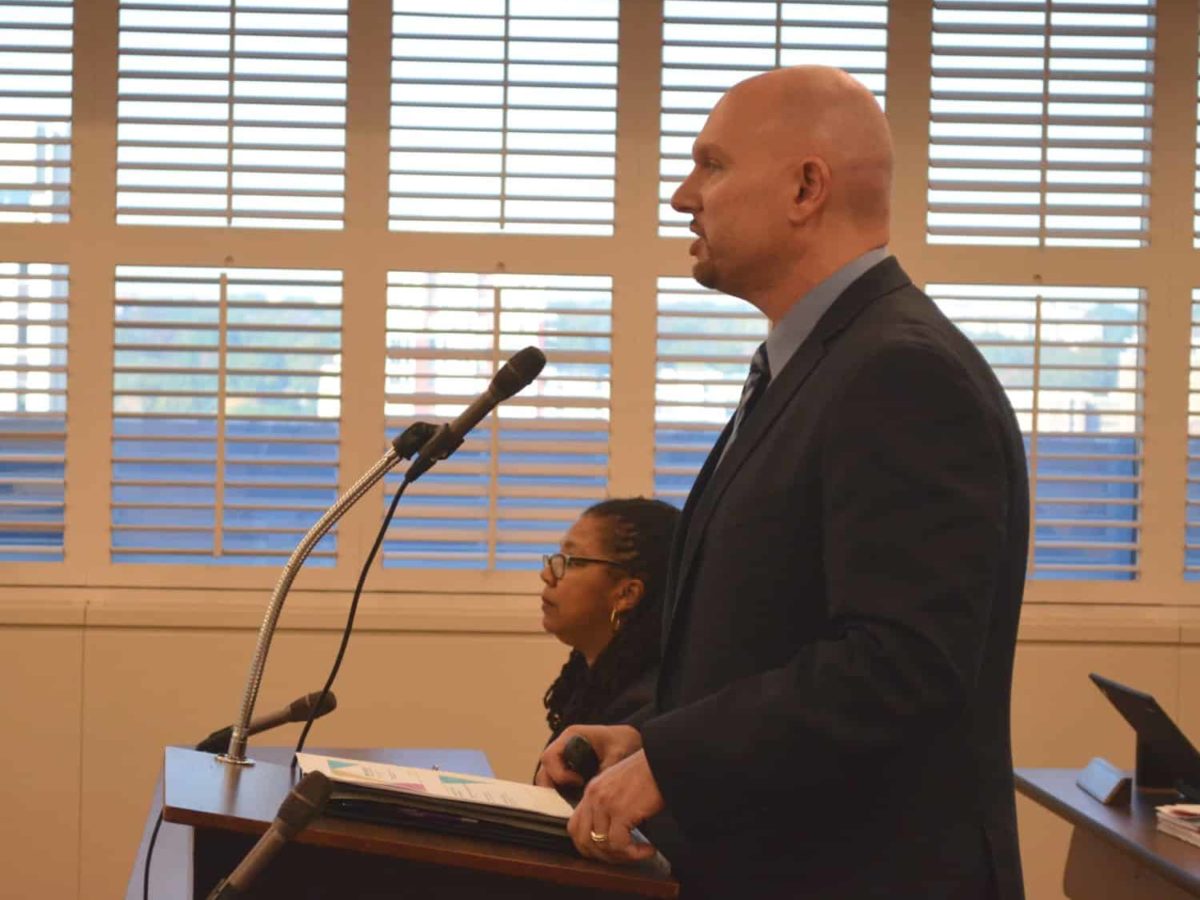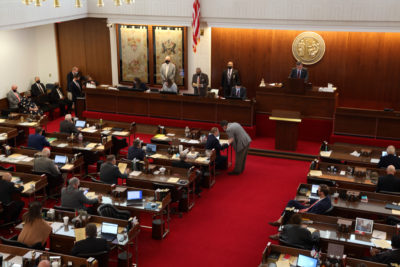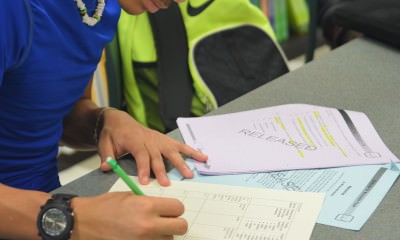
Last week, the State Board of Education voted unanimously to approve the inclusion of Robeson County’s Southside Ashpole Elementary School to the Innovative School District (ISD) — a program that will ultimately collect five of the state’s lowest performing schools in one “district” where they will be operated by Charter or Education Management Organizations.
Robeson County School Board Chair Peggy Wilkins-Chavis, said Friday she would likely vote to close the school rather than let it join the ISD, but she would not make any predictions as to how the rest of the board would vote.
“The state just did us wrong,” she said.
To the extent the State Board members had objections to the inclusion of Southside Ashpole, they were more focused on the slow pace at which the ISD was taking off. Board member Olivia Oxendine said the other schools on the list from which Southside Ashpole was drawn need to be put on notice. Southside Ashpole was on a short list that included three other schools.
“All the reasons they’re coming off the list, the State Board of Education needs to hold those…schools accountable for what they’ve promised (ISD Superintendent) Eric Hall they’re going to do verbally,” she said.
Board member Amy White said it is the state’s job to make sure schools are doing their jobs.
“I’m going to be a proponent of adding more schools…” she said. “Unfortunately, and fortunately…it is our job to put upon those communities and those schools excellence for every student.”
The Achievement School District (ASD) bill was passed during the 2016 General Assembly short session. At the heart of the legislation is the creation of the district with five low-performing schools, but it also gave school districts that participate the opportunity to pick up to three other low-performing schools in their districts to join an innovation zone. Schools in this zone would have charter-like flexibility but would continue to be managed by the school district.
The recently passed budget tweaked the ASD program slightly, changing its name to the North Carolina Innovative School District (ISD). It also added a provision that if a district participating in the ISD has more than 35 percent of its schools identified as low-performing, then all of those schools could become part of an Innovation Zone should the district elect that option.
While the State Board may be united in its support of the ISD, others have doubts.
What will Robeson County do?
Now that the State Board has accepted the Robeson County school, it is up to the county’s school board to decide what to do next. They can either go along with the State Board’s decision or vote to close the school, and it is not clear which path they will choose.
On October 16, the Robeson County school board and county commissioners voted to issue a joint resolution opposing the inclusion of the Robeson County school in the ISD.
Hall said he had expected to receive something from Robeson County about the joint resolution but had not, and that what he’s hearing from the county community is more positive.
“I have not heard that anybody has a desire to close the school, myself,” he said.
The Robeson County School Board expects to discuss the resolution at their meeting Thursday. The board is also expected to vote on what they want to do with Southside Ashpole.
Wilkins-Chavis did not like the way the state has handled the process, saying that the county was not given time to come up with a plan itself to improve the school, that the county was not given enough warning about the potential takeover, and that if the state wanted to improve her county’s schools, it should have gone about things differently.
“I feel like the state should have come in a year and worked with that school or the schools that were low,” she said.
If the Robeson County School Board votes Thursday to close its school, then Hall will have to start over next fall, this time choosing two or three schools to kick off the Innovative School District.
The pushback
Kris Nordstrom, a policy analyst with the North Carolina Justice Center’s Education and Law Project and a former analyst in the Fiscal Research Division of the North Carolina General Assembly, said the ISD allows the General Assembly to think they have done something to help North Carolina students when they really have not.
He points to studies out of Tennessee, which also tried the Innovative School District approach, showing that the program did not work.
“People probably don’t want their children experimented on by a failed model,” he said.
Terry Stoops, vice president of research and director of Education Studies at the John Locke Foundation, takes issue with criticisms of the Tennessee ISD model. The way the ISD is happening in North Carolina is different than how it was done in Tennessee, he said.
Nordstrom also said that some people are concerned that the ISD is an attempt to take over traditional public schools and turn them into charters.
“This is sort of the tip of the iceberg,” he said. “Obviously the people who stand to make money from this model have pumped in some significant funds.”
Stoops disagrees with that notion as well.
“They are not taking over school districts. They are not looking to permanently seize control of schools,” he said. “They are simply trying to help.”
Steve Unruhe, vice-chair of the Durham Public Schools Board, said the whole approach of the ISD is wrong.
“The built in hostility from the program was a real mistake from my standpoint,” he said.
A Durham school, Glenn Elementary, was on the short list of schools for inclusion in the ISD but ultimately was not chosen.
Unruhe said that the ISD should have taken the approach of finding schools that actually wanted the help the ISD is offering.
“I would rather start it with people who want to come on board, rather than just walk in and announce that I’m going to take something over,” he said.
And he also criticized the idea that a charter model, which includes management by outside, often for-profit, companies, can help.
“I have very little confidence, and I’ve seen no evidence anywhere, that outside management is a key factor for making a difference in how successful a school is and how successful students are,” he said.
To the extent charter schools are successful, he said they often mimic the same things that successful traditional public schools do.
Natalie Beyer, another Durham School Board member, did not like way the ISD came into existence period.
“There was a shell of a chance for the public to weigh in on it,” she said. “If this had been normal legislation and there had been understanding from the public and the ability of the people to say we don’t want a for-profit or outside entity taking over a school, you would be hearing exactly what you’re hearing now.”
She said the way Hall chooses schools, too, is a problem. She said the state is relying on flawed test data and the school performance grades, which stigmatize schools.
Hall did use test data, in part, to determine which schools made it on the list. He also met with administrators, teachers, and others in many districts, including the ones that made the short list, to get a sense for their plans and how things were operating. When the list was narrowed down to a few schools, he said he looked at the Grade Level Proficiency of the students at the schools. The Robeson County school was the worst, and in talking with district leaders, Hall found the district had no plan for improving it, he said.
“To me, it’s really an informed innovation, and it’s an informed intervention,” he said.
Beyer said districts would love help from the state. Just not like this.
“I think what local districts would welcome is genuine resources and support for the students in these schools,” she said. “And let’s not make any false pretenses, these schools are exactly correlated with where there are poor children and typically black and brown children.”
Stoops said he thinks the criticism of the ISD is overblown.
“For the scope of the program and the scope of the Innovative School District, it is a reaction that probably outweighs the amount of work that the Innovative School District will actually do,” he said.
Stoops also said that Republicans are receiving unfair criticism because of the ISD, and that is frustrating to him. He said people are spending a lot of time “inferring motives” as to why Republicans are supporting it.
“But there is an obvious answer to that,” he said. “This is an attempt to help schools that have underperformed and that are in need of some sort of external assistance. That is the purpose of this.”
He also attributed some of the pushback to embarrassment.
In Durham, in particular, there was a resistance to the inclusion of district schools in the ISD. He said a combination of embarrassment and a belief that locals can handle the situation best were likely responsible for the backlash there.
“There are folks that believe that these problems can be solved on the local level through an operation between county commissioners and school board members and members of the community, so there is this idea of an interloper seizing control of the school and a belief that a local district can make the improvements on their own,” he said.
For his part, Hall is not upset about the pushback to his project.
“The reactions themselves are not what concerns me,” he said. “It’s more about the fact of if the reactions are productive and lead to informed discussion about how to improve schools, then it’s a conversation worth having.”
During last week’s State Board meeting, White asked Hall to articulate his reasons, beyond public pushback, for choosing only one school. He had initially planned to choose two, and both Glenn and Southside Ashpole were on that list.
“I want there to be no doubt about the fact that pushback is not my concern,” he said. “My motivation is pure and sincere. It’s about how do we push our schools to get better.”
He said he wanted to make sure the ISD worked, and part of that was going slow to see what was working and what was not in order to make changes as the program progressed and five schools are ultimately included. He also said that the pressure on districts to avoid having their schools included in the ISD are forcing them to make improvements they might not have made otherwise.
Next steps
If Robeson County does not close Southside Ashpole, the next step will be for Hall to find a Charter or Education Management Organization to run the school. By statute, the final decision on that comes between January 15th and February 15th.
Southside Ashpole would be up and running at the start of next school year — 2018-19 — as the first school in the ISD. At the same time, Hall would again begin the process to identify schools to join the ISD.
Those schools would start the following year — 2019-20 — and the process would begin again to find two more schools. The year after that — 2020-21 — those schools would start, and the ISD would be fully up and running.
Recommended reading



